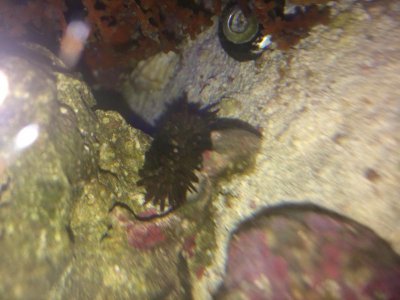Haleyf1024
New member
I recently noticed a sea urchin that crawls around my live rock (from Florida). It's spikes are short and fat, only about 1/4 - 1/2 an inch long at most. I noticed that when it isn't moving around, he flattens himself againts the rock and leaves the top part of his body exposed (no spikes on it). Any idea what species he is? The urchin is about 1- 1.5 inches in length. I was thinking short spined/rock boring urchin but he doesn't fit exactly with their descriptions. He doesn't hurt anybody or knock any rocks out of place and doesn't venture onto the glass at all. It also isn't purple like many FL urchins, he is only black.





